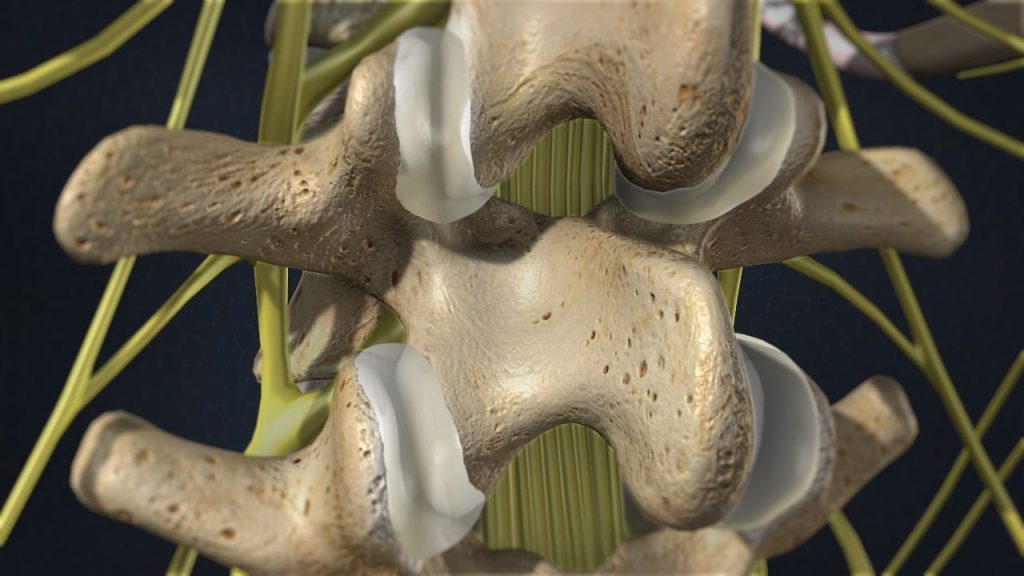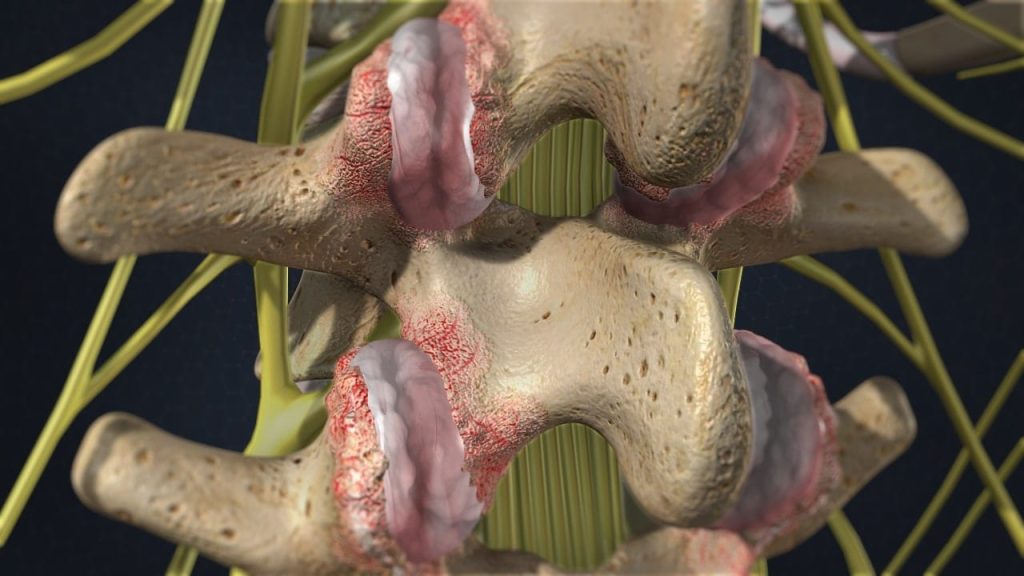Overview
The facet joints or zygapophyseal joints are a set of joints between the articular processes of two adjacent vertebrae. They provide support, stability and mobility to the vertebrae, especially on extending, bending and rotation. Similar to other joints in the body, these joints are vulnerable to inflammation and degeneration.
Facet joint syndrome or facet joint disease is a pain arising from the intervertebral joint facets.
Facet joint disorders are some of the most common of all the recurrent, disabling low back and neck problems and can cause serious symptoms and disability for patients.
Causes
The facet joints are covered with cartilage and are surrounded by a lubricating capsule that enables the vertebrae to bend and twist. Each capsule has a rich supply of tiny nociceptive nerve fibers and implicates this structure as a potential source of pain.
Facet joint disease occurs when these joints become stressed and damaged. This damage can occur from everyday wear and tear, injury to the back or neck or because of intervertebral disc degeneration and loss of inherent structural integrity.
The cartilage that covers the stressed facet joints gradually wears away. The joints become swollen and stiff. The vertebral bones rub directly against each other, which can lead to growth of bone spurs along the edges of the facet joints and to an enlargement of the joints.
Symptoms
Pain arising from the facet joints varies depending on the region of the spine that is affected.
If the cervical or upper spine is affected, pain may be experienced in the neck, shoulders and upper or middle back. It can also be accompanied by headaches.
If the lumbar spine is affected, pain may be experienced in the lower back with radiation into the buttocks, groin, lower abdomen and back of the thigh.
Treatment
Treatment for the facet joint disease is initially conservative with rest, step positioning (stress-reducing positioning), heat therapy, analgesic/anti-inflammatory medications and physical therapy. Moreover, facet joint infiltrations or facet joint blocks may be administered not only to diagnose facet joint pain but also to treat it.
If the patient shows a positive response to the facet joint blocks after having failed nonoperative care, the next treatment option is often radiofrequency denervation or rhizotomy.
In cases of unusually chronic, severe and persistent facet joint problems, bone fusion surgery may be an option.
References
- Kraemer J., Hasenbring M., Kraemer R., Taub E., Theodoridis T., Wilke H.J.: Intervertebral Disc Diseases: Causes, Diagnosis, Treatment and Prophylaxis. Thieme 2009.
- Laplante B., DePalma M.: Spine Osteoarthritis. American Academy of Physical Medicine and Rehabilitation 2012; 4: 28-36.
- Kalichman L., Hunter D.: Lumbar Facet Joint Osteoarthritis: A Review. Semin. Arthritis Rheum 2007; 37 (2): 69-80.



